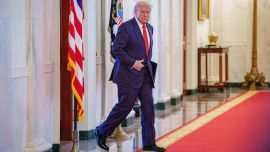A free trade agreement with the European Union which has yet to be implemented, an imperfect common external tariff, mounted with great difficulty – these factors and others mark the 30-year history of Mercosur, a mosaic of successes and inconclusive challenges.
The Mercado Común del Sur (Mercosur) between Argentina, Brazil, Paraguay and Uruguay was born on March 26, 1991.
“The political will to establish the bases for an ever closer union between our peoples is reaffirmed,” says the Treaty of Asunción, its foundational document.
In 1994, in Ouro Preto (Brazil), the common external tariff was agreed. It is currently a free-trade zone with 295 million inhabitants spread over more than 14 million square kilometres of territory.
Its embryo had been a 1985 understanding between Argentina and Brazil, bringing to an end a century and a half of wrangling and hypotheses of conflict.
When Mercosur was constituted, the governments in the region mostly favoured an open market economy, privatising public services in some cases. Between 1991 and 1998 exports within the zone grew annually by 22 percent on average, according to the Economic Commission for Latin America and the Caribbean (Cepal in its Spanish acronym) while the stocks of foreign direct investment rose from US$230 billion to US$940 billion between 2003 and 2014.
But there were setbacks. Argentina caused the structure to tremble in 2001 with its worst political and economic crisis. Various devaluations in Argentina and Brazil also rocked the process.
A milestone came in 2003 when it established free trade with the Andean Community formed by Bolivia, Colombia, Ecuador, Peru and Venezuela with Peru becoming the third associate state following Chile and Bolivia in the 1990s.
In the first decade of this century leftist governments dominated the region. At the 2005 Summit of the Americas in Mar del Plata, Mercosur headed the rejection of the American Free Trade Agreement proposed by the then United States President George W. Bush. In 2006 Venezuela signed the Protocol of Adhesion, becoming a full member in 2012 at a summit from which Paraguay was suspended. But strong trade differences and political tensions conspired against its full integration.
In 2010 a customs code was agreed. The free circulation of persons was also established. But according to the specialists, the common external tariff is “riddled” with multiple exceptions.
From 2011, further disputes rose over the potential entry of Bolivia, Paraguay’s ouster one year later, and the 2017 suspension of Venezuela, as the bloc’s “democratic clause” was applied.
In recent years, the most notable landmark came in 2019, whenafter 20 years of negotiations, the free- trade agreement between Mercosur and the European Union was signed. European reticience, however, has prevented its parliamentary ratification.
– TIMES/AFP
























Comments